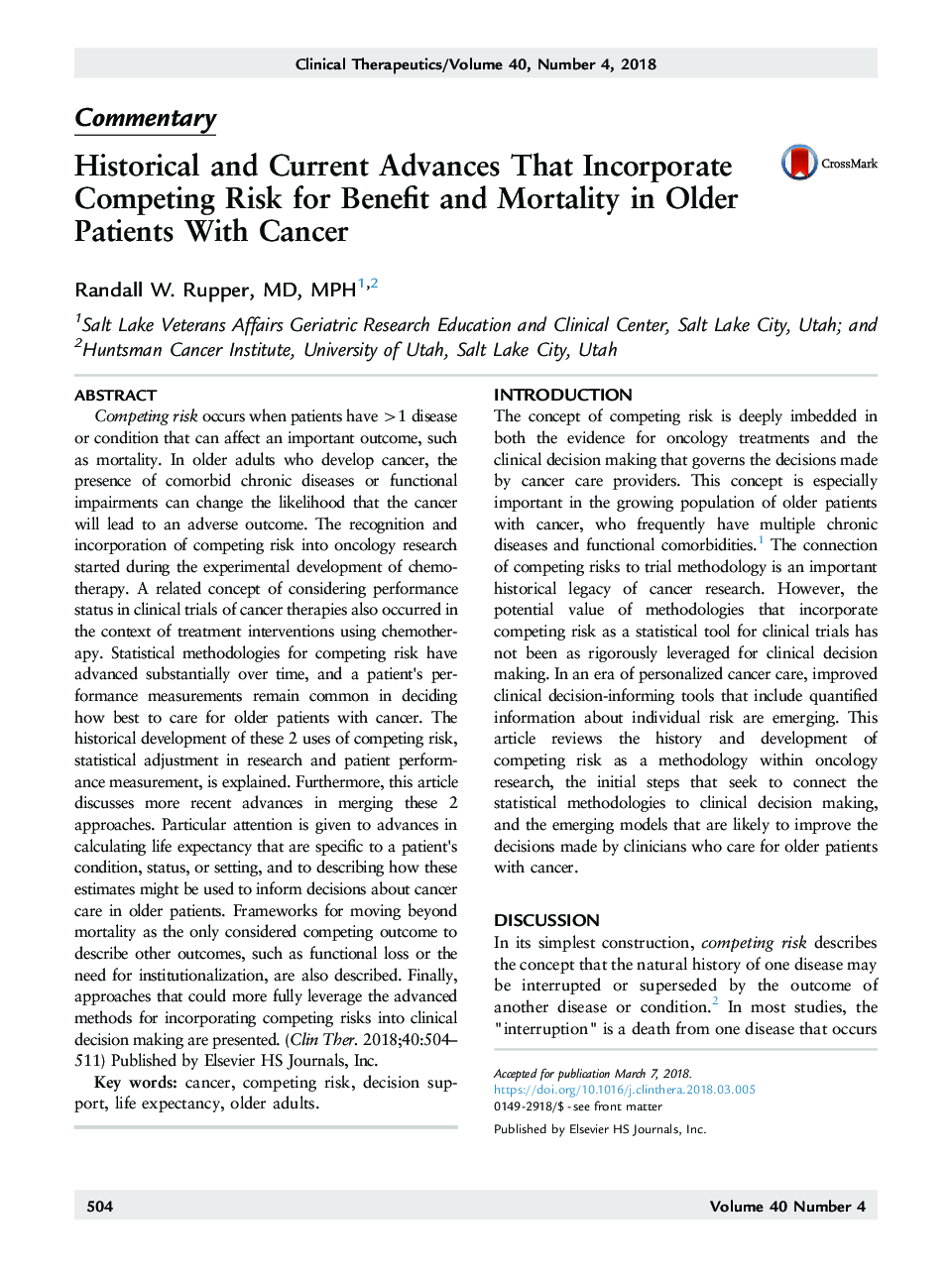| Article ID | Journal | Published Year | Pages | File Type |
|---|---|---|---|---|
| 8528086 | Clinical Therapeutics | 2018 | 8 Pages |
Abstract
Competing risk occurs when patients have >1 disease or condition that can affect an important outcome, such as mortality. In older adults who develop cancer, the presence of comorbid chronic diseases or functional impairments can change the likelihood that the cancer will lead to an adverse outcome. The recognition and incorporation of competing risk into oncology research started during the experimental development of chemotherapy. A related concept of considering performance status in clinical trials of cancer therapies also occurred in the context of treatment interventions using chemotherapy. Statistical methodologies for competing risk have advanced substantially over time, and a patient's performance measurements remain common in deciding how best to care for older patients with cancer. The historical development of these 2 uses of competing risk, statistical adjustment in research and patient performance measurement, is explained. Furthermore, this article discusses more recent advances in merging these 2 approaches. Particular attention is given to advances in calculating life expectancy that are specific to a patient's condition, status, or setting, and to describing how these estimates might be used to inform decisions about cancer care in older patients. Frameworks for moving beyond mortality as the only considered competing outcome to describe other outcomes, such as functional loss or the need for institutionalization, are also described. Finally, approaches that could more fully leverage the advanced methods for incorporating competing risks into clinical decision making are presented.
Related Topics
Health Sciences
Medicine and Dentistry
Medicine and Dentistry (General)
Authors
Randall W. MD, MPH,
